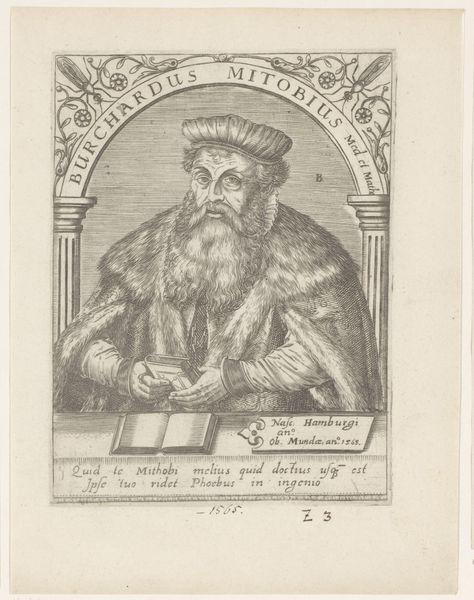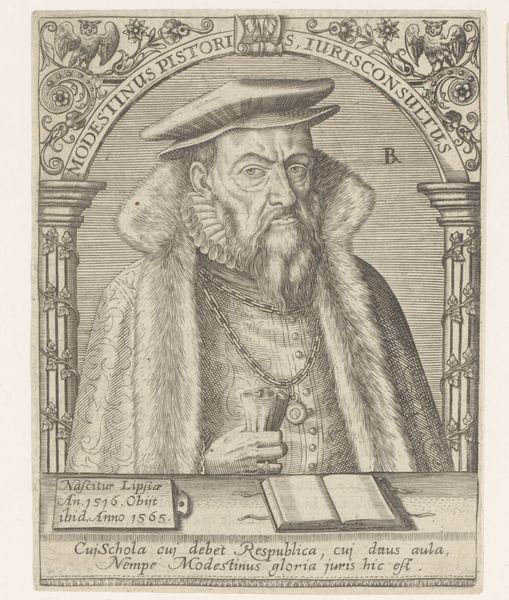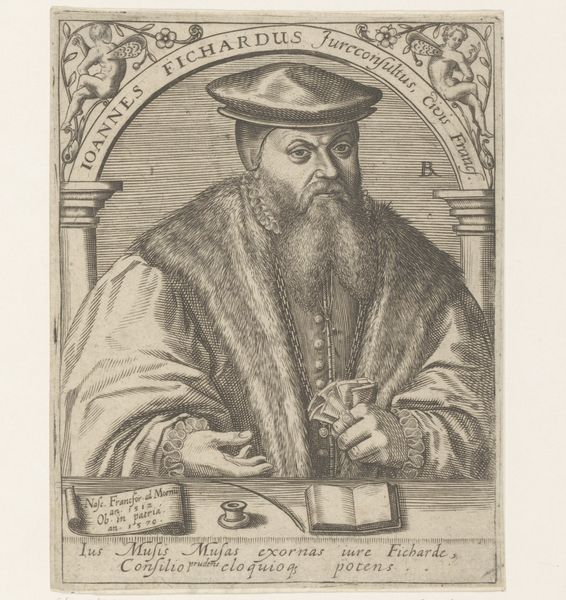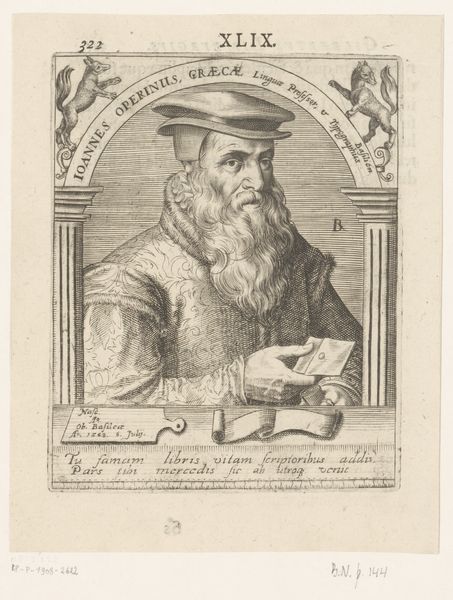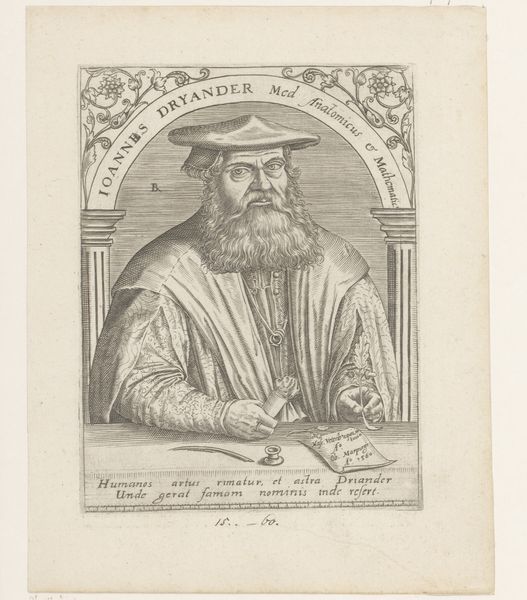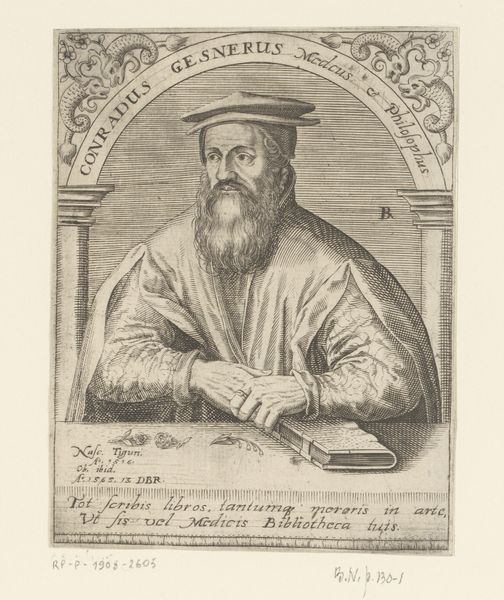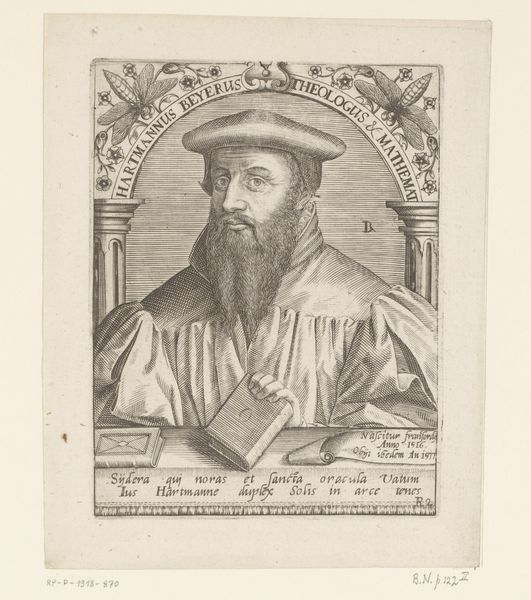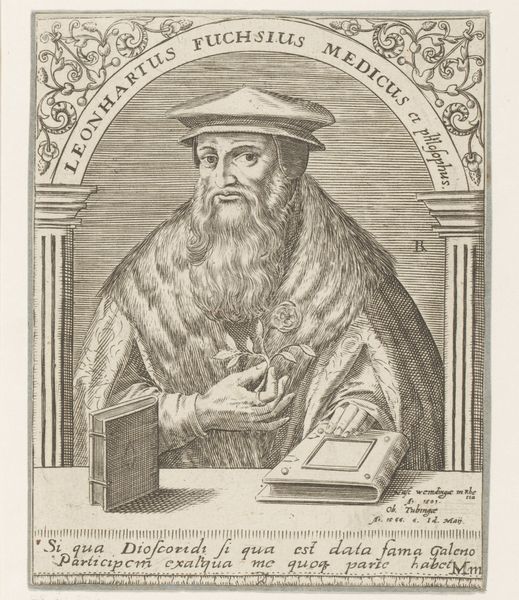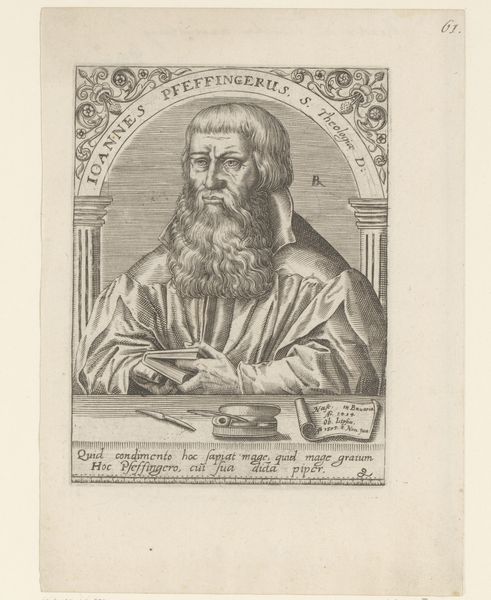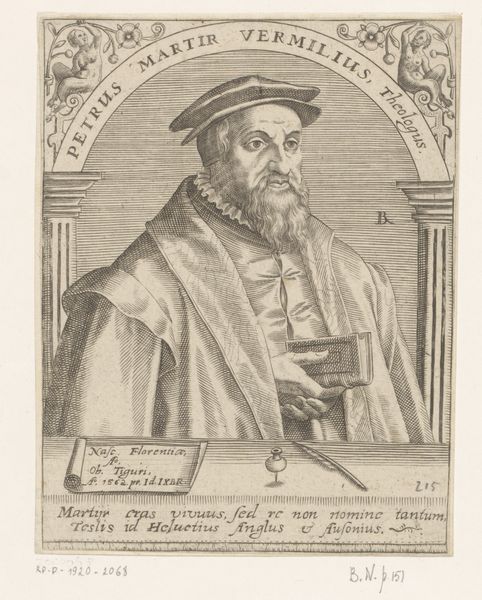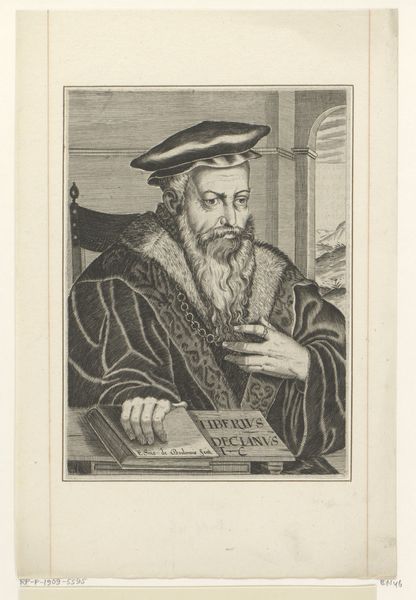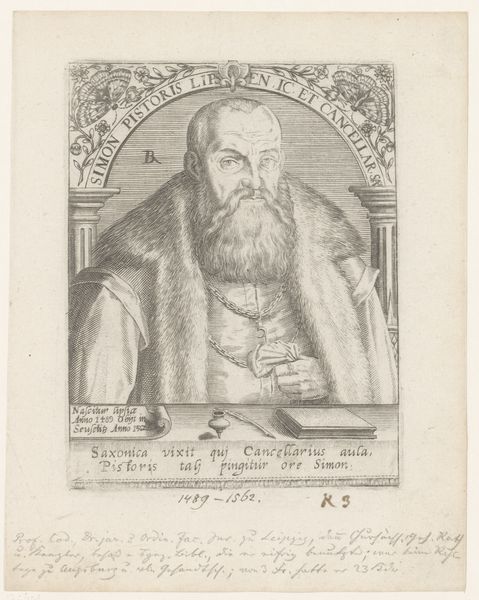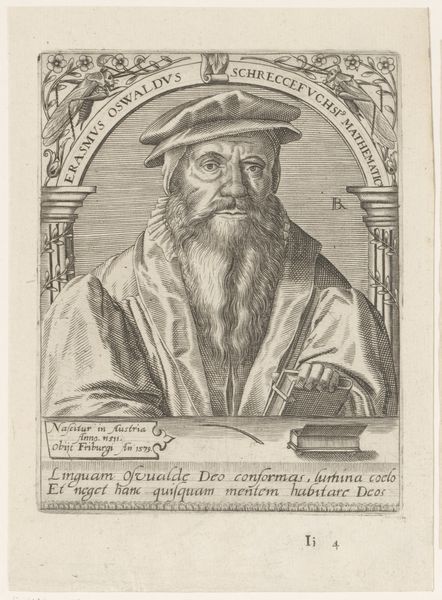
print, engraving
#
portrait
# print
#
old engraving style
#
portrait drawing
#
northern-renaissance
#
engraving
Dimensions: height 140 mm, width 107 mm
Copyright: Rijks Museum: Open Domain
Curator: Let's discuss this print, a "Portret van Jacob Milich" from around 1597-1599, made by Robert Boissard, an engraving housed at the Rijksmuseum. Editor: The fine lines creating the image really strike me; there’s a level of detail considering the medium that is unexpected. What stands out to you? Curator: Immediately, I'm drawn to consider this engraving as a product of its time and place, part of the printmaking industry which shaped the dissemination of knowledge and images. Note the specific tools and labor involved in producing those fine lines that struck you. How might the act of creating multiple impressions alter our understanding of the artwork itself? Editor: That makes sense. Thinking about how prints circulated at the time… Were they considered “high art” then? Curator: That's the point! By emphasizing the *process* of reproduction and its potential for distribution, it questions the boundaries of traditional categories. Notice too that the inscription underscores the man's profession in medicine, linking intellectual labour to manual crafting of the portrait. The text adds value beyond just pictorial representation; it's essentially branding, right? What happens when art becomes aligned with market concerns of supply, value, and demand of images like these? Editor: Right, it's like he's marketing himself and his intellect, creating a persona that would become recognisable. I never considered that aspect before – thinking about the economic motivations behind producing images in that way! Curator: Exactly. By investigating its production and dissemination, this "Portret van Jacob Milich" opens up interesting discussions regarding materiality, labor, and art historical valuation that can also be mirrored to our present-day economy and culture of image sharing.
Comments
No comments
Be the first to comment and join the conversation on the ultimate creative platform.
